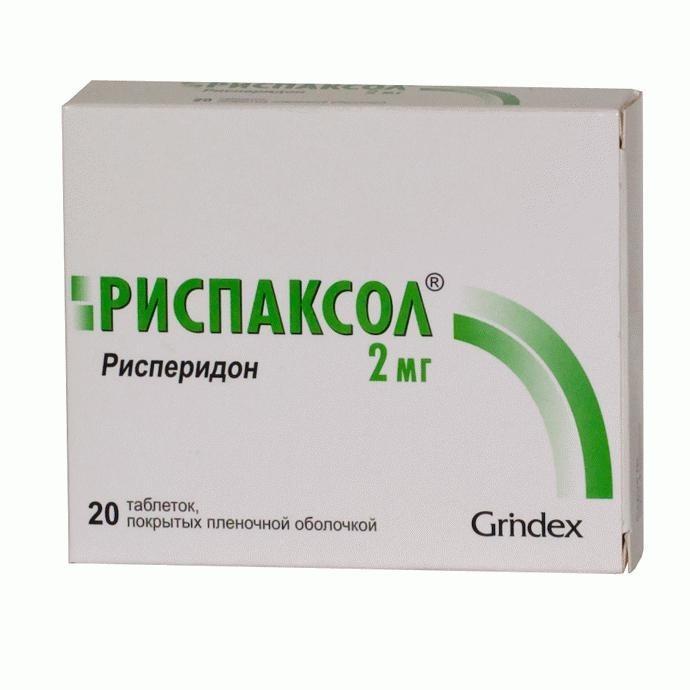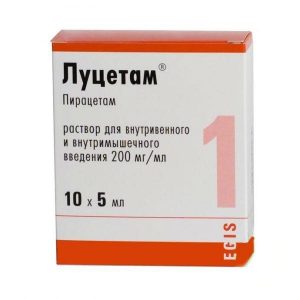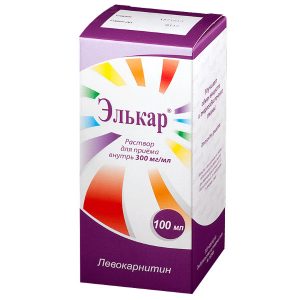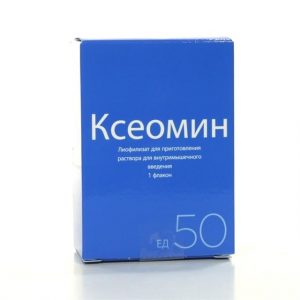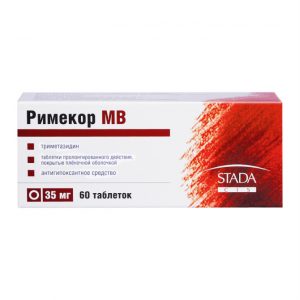Description
Packaging
20 pcs.
Pharmacological action
Rispaxol is an antipsychotic (antipsychotic), a benzisoxazole derivative also has a sedative, antiemetic and hypothermic effect.
Risperidone is a selective monoaminergic antagonist with a pronounced affinity for serotonergic 5-HT2 and dopaminergic D2 receptors, it also binds to alpha1-adrenergic receptors and, with somewhat lesser affinity, to Hl-histaminergic and alpha2-adrenergic receptors. It has no tropism for
cholinergic receptors. The antipsychotic effect is due to blockade of the dopamine D2 receptors of the mesolimbic and mesocortical systems.
Sedative effect is caused by blockade of adrenoreceptors of the reticular formation of the brain stem antiemetic effect – blockade of the dopamine D2 receptors of the trigger zone of the vomiting center hypothermic effect – blockade of the dopamine receptors of the hypothalamus.
Reduces productive symptoms (delirium, hallucinations, aggressiveness), automatism. It causes less suppression of motor activity and to a lesser extent induces catalepsy than classical antipsychotics (antipsychotics).
Balanced central antagonism of serotonin and dopamine may reduce the risk of extrapyramidal symptoms.
Risperidone may cause a dose-dependent increase in plasma prolactin concentrations.
Pharmacokinetics of
When ingested, risperidone is completely absorbed (regardless of food intake) and maximum plasma levels are observed after 1-2 hours.
Risperidone is metabolized by P-450 IID6 cytochrome to form 9-hydroxyrisperidone, which has a similar pharmacological effect. Risperidone and 9-hydroxyrisperidone are an effective antipsychotic fraction.
When ingested, risperidone is excreted with a half-life of about 3 hours. It was found that the half-life of 9-hydroxyrisperidone and the active antipsychotic fraction is 24 hours.
In most patients, an equilibrium concentration of risperidone is observed one day after the start of treatment. The equilibrium state of 9-hydroxyrisperidone in most cases is achieved 3-4 days after the start of treatment. The concentration of risperidone in plasma is proportional to the dose of the drug (within therapeutic doses).
Risperidone is rapidly distributed in the body. Distribution volume makes 1 -2 l / kg. In plasma, risperidone binds to albumin and a-1-glycoprotein. The binding of risperidone to plasma proteins is 88%, 9-hydroxyrisperidone -77%.
It is excreted by the kidneys – 70% (of which 35 – 45% in the form of a pharmacologically active fraction) and 14% – with bile. The remaining amount is inactive metabolites.
In elderly patients, after a single oral administration, increased plasma concentrations of the active fraction up to 30% were observed, and in patients with renal failure up to 60%, as well as a reduced clearance of the antipsychotic fraction.
The presence of liver failure does not affect the concentration of risperidone in plasma, but in such patients the average amount of free fraction in plasma was 35% higher.
Indications
Schizophrenia (acute and chronic) and other psychotic conditions with a predominance of productive (delirium, hallucinations, aggressiveness), negative (dull affect, emotional and social detachment, poor speech) or affective (anxiety depression)
symptoms, behavioral disorders due to dementia (when symptoms of aggressiveness, disturbances in activity or psychotic symptoms appear) or mental retardation or reduced intelligence (when destructive behavior dominates)
mania bipolar disorder (adjuvant therapy).
Contraindications
Hypersensitivity.
Restrictions on the use of
Heart failure, myocardial infarction, AV block and other disorders of conduction, impaired cerebral circulation and / or liver and kidney function, breast cancer, hypovolemia, Parkinson’s disease, epilepsy, pregnancy, breast-feeding, up to 15 years of age ( lack of application experience).
Use during pregnancy and lactation
During pregnancy, it is possible if the intended benefit to the mother outweighs the potential risk to the fetus.
FDA category of action on the fetus is C.
Breastfeeding should be avoided during treatment.
Composition of
1 tablet contains:
active substance:
risperidone 2 mg
excipients:
anhydrous lactose,
corn starch,
magnesium stearate, silicon dioxide microcrystalline dioxide
dye Opadray II white 33G28707 (hypromellose (hydroxypropyl methylcellulose), lactose monohydrate, macrogol 3000, titanium dioxide, glyceryl triacetate), carnauba wax
Dosage and administration of
Rispaxol is taken orally, in 1-2 doses.
Initial and optimal doses: for schizophrenia and bipolar disorder – 2 mg / day and 2-6 mg / day, respectively, for behavioral disorders of 0.25 mg and 0.5 mg 2 times a day, in elderly patients and against diseases liver and kidneys at 0.5 mg and 1-2 mg 2 times a day, respectively.
Side effects
From the nervous system and sensory organs: sleep disturbance, incl. insomnia or drowsiness, irritability, fatigue, impaired attention, anxiety, anxiety, headache, dizziness, extrapyramidal disorders (rigidity, hypokinesia, hypersalivation, akathisia, acute dystonia), tardive dyskinesia, neuroleptic malignant syndrome, thermoregulation disorder, convulsive, convulsive (in predisposed elderly patients), blurred vision.
From the cardiovascular system and blood (hematopoiesis, hemostasis): orthostatic hypotension, reflex tachycardia, arterial hypertension, neutro and thrombopenia, thrombocytopenic purpura.
From the digestive tract: nausea, vomiting, dyspeptic symptoms, abdominal pain, constipation, increased levels of hepatic transaminases.
From the genitourinary system: dysmenorrhea, amenorrhea, impotence, impaired erection and ejaculation, anorgasmia, decreased libido, priapism, polyuria, urinary incontinence, edema.
Allergic reactions: skin rash, angioedema.
Other: rhinitis, galactorrhea, gynecomastia, weight gain, hypervolemia (due to polydipsia or syndrome of inadequate secretion of ADH), hyperglycemia (in patients with diabetes mellitus).
Drug Interactions
Given that Rispaxol primarily affects the central nervous system, it should be used with caution in combination with other centrally acting drugs and ethanol.
Rispaxol decreases the effectiveness of levodopa and other dopamine agonists.
Clozapine reduces risperidone clearance.
With the simultaneous use of rispaxol and carbamazepine, a decrease in the concentration of the active antipsychotic fraction of risperidone in plasma was noted. Similar effects can be observed when using other inducers of hepatic enzymes.
When used simultaneously with rispaxol, phenothiazines, tricyclic antidepressants and some beta-blockers can increase plasma risperidone concentrations, but this does not affect the concentration of the active antipsychotic fraction.
When used simultaneously with rispaxol, fluoxetine can increase the concentration of risperidone in the plasma, but to a lesser extent the concentration of the active antipsychotic fraction.
When using rispaxol together with other drugs that are highly bound to plasma proteins, clinically pronounced displacement of any drug from the protein fraction of plasma is not observed.
Antihypertensive drugs increase the severity of lowering blood pressure with rispaxol.
Overdose
Symptoms: drowsiness, sedation, depression of consciousness, tachycardia, arterial hypotension, extrapyramidal disorders, in rare cases, prolongation of the QT interval.
Treatment: it is necessary to ensure clear airway to ensure adequate oxygenation and ventilation, gastric lavage (after intubation, if the patient is unconscious) and the appointment of activated charcoal in combination with laxatives. Symptomatic therapy aimed at maintaining the vital functions of the body.
For timely diagnosis of possible cardiac arrhythmias, ECG monitoring should be started as soon as possible. A thorough medical observation and ECG monitoring are carried out until the symptoms of intoxication disappear completely. There is no specific antidote.
Storage conditions
The product should be stored in a dark place out of the reach of children, at a temperature not exceeding 25 ° C.
Active ingredient
Risperidone
Conditions of supply of
Pharmacy Prescription
Form of Treatment
tablets
Grindex, Latvia
